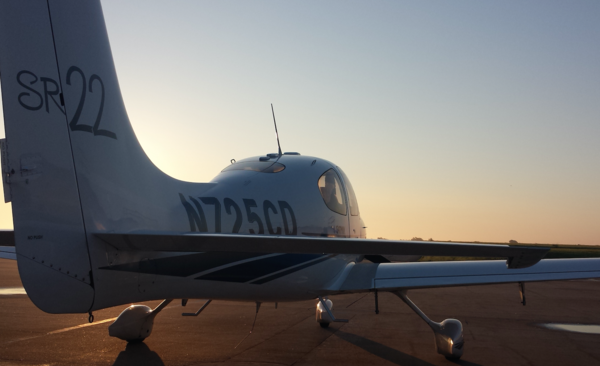978 UAT vs 1090 MHz: Which ADS-B solution is for you
Within the United States, we are fortunate enough to have a number of options when it comes to selecting an ADS-B solution for our aircraft. In addition to a variety of solutions, we also have the option of receiving and displaying the benefits of ADS-B compliance (free traffic and weather!) on a compatible display in the cockpit. With so many options, solutions and features available to us, which solution is for you? Let’s take a look…
Above or below 18,000 feet?
Forget all of the complicated frequencies and numbers for a second and ask yourself: Do I plan to fly above 18,000 feet? If your answer is yes, you must pursue a 1090ES solution such as the GTX 330ES. If your answer is no, perhaps a 978 UAT solution is for you. The GDL 88 ADS-B datalink is an ideal solution for those of you flying below 18,000 feet who have an installed display such as a 430W/530W or GTN 650/750 already installed in your aircraft because the GDL 88 pairs with these displays to display the benefits of ADS-B – free weather and traffic!
FREE Weather
As pilots, part of our pre-flight ritual includes checking and interpreting the weather, including wind, ceiling, visibility, etc. Oftentimes our “go/no-go” decision is also based on the weather, so why not receive it for free while in-flight? Flight Information Service-Broadcast (FIS-B) weather displays a variety of weather products including NEXRAD, METARs, TAFs, winds aloft and more, on portable devices ranging from an iPad running Garmin Pilot to a certified display in the panel. It’s free, it’s easy to display, so what’s your excuse?
TargetTrend, TerminalTraffic and more!
It’s hard to realize the benefits of receiving and displaying traffic in the cockpit; that is of course until you have flown with it! “See and avoid” is easier than ever before while receiving traffic information on a compatible display. Over the last few months, I have had the opportunity to fly with an ADS-B In/Out-equipped aircraft and it’s impressive to see the traffic targets on the traffic/moving map page, well before you receive a traffic advisory from ATC, allowing you to anticipate and maneuver well in advance. Even further, Garmin’s exclusive technology like TargetTrend and TerminalTraffic give you more than just traffic targets on the display.
It's important to keep in mind, Garmin Vantage ADS-B Solutions like the GDL 88 or GDL 84 are dual-link, so they broadcast ADS-B Out on 978 MHz but receive traffic on both frequencies (978 MHz UAT and 1090 MHz). These all-in-one solutions are ideal for pilots looking to meet both ADS-B Out requirements, while receiving ADS-B In. For customers that operate above 18,000 feet who are in need of a 1090 solution such as the GTX 330ES, GTX 33ES or GTX 23ES, they too can comply with ADS-B requirements – just remember, a WAAS position source is required to be paired with these transponders!
To see which solution best suits your needs, visit Garmin’s ADS-B Academy and while you’re there, take a peek at our installation planner, which makes it easy to see what solution is right for you!
The post 978 UAT vs 1090 MHz: Which ADS-B solution is for you appeared first on Garmin Blog.
Sample Block Quote
Praesent vestibulum congue tellus at fringilla. Curabitur vitae semper sem, eu convallis est. Cras felis nunc commodo loremous convallis vitae interdum non nisl. Maecenas ac est sit amet augue pharetra convallis nec danos.
Sample Paragraph Text
Praesent vestibulum congue tellus at fringilla. Curabitur vitae semper sem, eu convallis est. Cras felis nunc commodo eu convallis vitae interdum non nisl. Maecenas ac est sit amet augue pharetra convallis nec danos dui.
Cras suscipit quam et turpis eleifend vitae malesuada magna congue. Damus id ullamcorper neque. Sed vitae mi a mi pretium aliquet ac sed elitos. Pellentesque nulla eros accumsan quis justo at tincidunt lobortis denimes loremous. Suspendisse vestibulum lectus in lectus volutpat, ut dapibus purus pulvinar. Vestibulum sit amet auctor ipsum.


